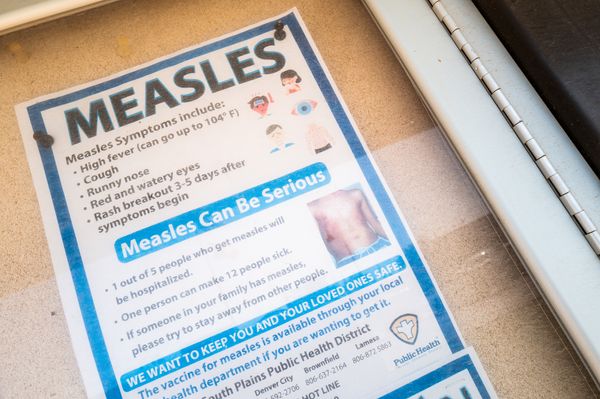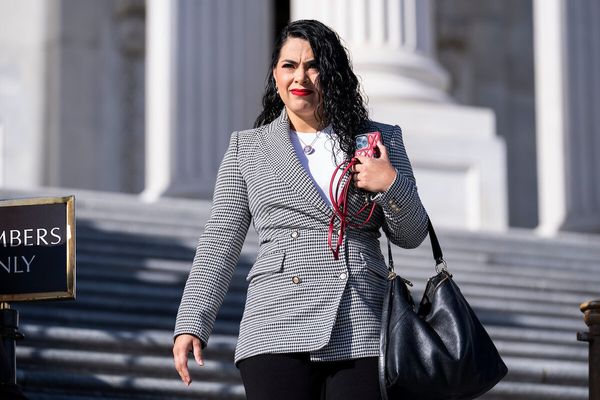
Brian Cashman did not watch the playoffs last year. It was the first time in seven seasons, and only the fifth since he took over as New York Yankees general manager in 1998, that his team did not make it to October, and as a consequence, he found himself with less time than ever.
“I was too busy being audited,” he says wryly.
Whether the 82–80 record, the club’s worst since 1992, sparked a reckoning depends on whom you ask. In the days after a season that led fans to call for owner Hal Steinbrenner to sell the team, wear FIRE CASHMAN T-shirts to Yankee Stadium and boo manager Aaron Boone, the decision makers—among them Steinbrenner; Cashman; Boone; assistant general manager Mike Fishman; vice president of baseball operations Tim Naehring; vice president of player development Kevin Reese; and special assistants Brian Sabean, Jim Hendry and Omar Minaya—gathered at the organization’s offices in Tampa.
Cashman stayed calm, says Hendry. “His opening speech was: We had a bad year and we’re going to fix it,” he recalls. “He didn’t panic.”
The week after the meetings, Steinbrenner said he had told his executives, “I want you to challenge everything, all of our philosophies, all of our practices, but more importantly, in a respectful way, I want you to challenge each other. I want you to critique each other. Check your egos at the door.”
Steinbrenner described the meetings as productive. “At times it got a little dicey, but it was respectful the entire time,” he said. “And there wasn’t one stone we left unturned, from health of the team, what we’re doing in the clubhouse, clubhouse culture, what we do in the weight room, analytics, pro scouting, biomechanics, is there enough communication between everybody.”
Underneath the stones they found a variety of answers. Captain and right fielder Aaron Judge lobbied for more contact and athleticism. Naehring wanted to balance the lineup and add players with more level swing paths. Minaya believed they had gotten too pull-happy. Assistant hitting coach Casey Dykes thought the answer was just improved health.
“Some good convos,” Judge says. “Some bad convos.” Did his calls with Cashman get contentious? “I think it’s just us both being passionate about what we believe,” Judge says. “I think that what it comes down to is he listened to us, he did what he thought was best and now we’re in this position.”
The changes the organization made were powerful enough to get the team to the World Series, which begins on Friday against the Los Angeles Dodgers, but subtle enough for Cashman to insist he was right all along.
“We executed our philosophy [in 2023],” he says. “But then I think that, because we had a poor season, the philosophy was challenged. So we stayed true to our philosophy, which has consistently paid off for us for feels like 30 years, but the philosophy was questioned and challenged and dissected and turned upside down and inside out, by outside and inside forces. And we stayed the course.”
He adds, “We’re either going to double down on everything we do and how we do it, or make some adjustments. And for the most part, we doubled down on most of what we do.”
As he speaks, on the cusp of the World Series, does he feel vindicated? He rejects the question. He knows how this goes. If the team wins, they’ll all be heroes. “If it doesn’t,” he says, “Then it goes into the same category of all the other teams that tried and failed, right?”
A few dozen feet away, the team’s most obvious adjustment takes batting practice, ripping line drives to center field. It all comes back, everyone agrees, to Juan Soto.
“We knew he was one of the elite guys in the game,” says Hendry. “You put him together with Judge, and you just saw things that go back to Ruth and Gehrig, and Mantle and Maris.”

The Yankees had tried to acquire Soto from the Washington Nationals at the 2022 trade deadline after Soto rejected a 15-year, $440 million extension offer and GM Mike Rizzo “put him up for auction,” says Cashman. But he found the price too high, and Soto went to the San Diego Padres instead. Cashman tried again a year later, when both the Yankees and the Padres were within a few games of .500 and were waffling about whether to buy or sell. In the end both opted for some bargain shopping, and both finished 82–80 and missed the playoffs.
So as the season wound down, the Yankees turned their attention to who would make up the next year’s team. That process included consulting with present stars. DH Giancarlo Stanton says he had some opinions and he shared them, but he does not wish to share them now. He does acknowledge, though, that at times in the past he felt the lineup was unbalanced.
“Seven, eight righties,” he says. “And when they bring in a guy [with a batting average against] of .130 off righties, it makes it harder.”
Judge is willing to be a bit more specific.
“It was just how they valued players and what players they were going after,” he says. “I think numbers tell a certain story, and you gotta use analytics and numbers like that, but it comes down to: You gotta have good players. You gotta have good people. And I think that's where going out and getting Juan Soto; getting a guy like [left fielder Alex] Verdugo who plays good defense, hits for a high average; getting a guy like [third baseman] Jazz [Chisholm], who’s an athletic player that can do so many things; [righty] Marcus Stroman, a guy who’s gonna give you quality starts—I think that just helped put us in a good position.”
Judge adds, “I didn't do much. I think I was just the squeaky wheel that was making some noise, but that’s hats off to [the front office]. They’ve been working hard for us to get us in this position.”
On Dec. 5, the Yankees traded three pitching prospects to the Boston Red Sox for Verdugo. Two days later, they finalized the biggest deal of the offseason: their best young pitcher, Michael King, top pitching prospect Drew Thorpe, two other strong young pitchers and backup catcher Kyle Higashioka for Soto and glove-first center fielder Trent Grisham. They committed to paying Soto $31 million for 2023, the highest salary ever for a player in arbitration, and they took the chance that they will lose him when he becomes a free agent at the end of this season. He is expected to pursue a deal of well over $500 million.
“We gave up a lot,” says Cashman, “And it was a one-year deal for a lot of money, and it was a big chess move, no doubt about it, that was designed to increase our chances—and it did.”
You don’t have to be a terribly good scout to identify Soto—a 25-year-old four-time All-Star who has had the fifth-highest WAR by a hitter since his 2018 debut—as a target, but he offered more than just moments such as the 10th-inning three-run home run that last week propelled the Yankees to the pennant.
“We looked in the mirror and said, Yes, we do have a lot of similar-type guys,” says Naehring, listing the qualities: “Control the zone, damage, with a lot of strikeouts.” Indeed, from 2021 through ’23, no other team had more hitters than the Yankees’ 15 with less than four at bats per strikeout and an isolated slugging average of more than .175. And most of those were righthanded; Soto, Verdugo and Chisholm, added from the Miami Marlins at the trade deadline, all bat from the left side.
“Obviously swing and miss is big in our game right now, the industry,” says Naehring. “Here’s a guy that controls the zone, bat-to-ball, a more level swing that still has damage and power, can basically utilize the whole field—so things that we want to continue to get better with, better than the industry itself, he’s the poster child for.”
By the end of the season’s opening series, a four-game sweep of the Houston Astros in which the Yankees averaged 5.25 runs per game, Minaya says he knew they were onto something. “We were working the count, but we were hunting early,” he says. “[Soto] doesn’t give up an at bat. That’s contagious.” Dykes says he thinks Soto’s level of dedication spread quickly. “It’s almost like an accountability piece,” he says. “You know that you better be focused, too.”
“He is laser-focused, every pitch of every at bat, which, to me, is something that players learn from, gravitate to, so there’s a big residual value there,” says Naehring. In fact, he has noticed as he tours the minor leagues: All of a sudden, a lot of Yankees prospects have adopted Soto’s batting stance, down to the way he turns his front toe slightly inward, and his shuffle, the dance he does on close pitches. Naehring hopes they will pick up elements of the at bats Boone likens to a “war.”
In the meantime, the big-league Yankees are enjoying it. “He just wears the pitchers down,” says Stanton. “It doesn’t matter if he gets out. He’s having a tough at bat. He’s having a stressful at bat. And those are the things that you can’t fully understand unless you're in the game—the stress to get him out, and then you gotta deal with Judge, and then you gotta deal with everyone behind.”
Everyone behind has been more dangerous than in years past, too. Judge, who missed 42 games last year after tearing a ligament in his right big toe, hit well when he played last year but was notably better this year. He fell 10 points of batting average short of the Triple Crown and will almost certainly win the American League Most Valuable Player award. Shortstop Anthony Volpe dropped his power numbers but improved his batting average. Second baseman Gleyber Torres struggled for much of the 2024 season but fixed his swing in the second half and has been nearly unstoppable in the playoffs, leading off eight of the Yankees’ nine postseason games by reaching base. And Stanton, after hitting .191 last year—easily the worst mark of his career—has been October’s most fearsome creature, with a 1.179 OPS in the playoffs.
Some of that improvement is surely due to the new players the Yankees added. And some is likely because these were always good players, and eventually they would play well again. “I just felt like the noise was inaccurate, and it just became emotional,” Cashman says. “I thought at the end of the day, we had some individuals that didn’t perform up to expectations, and we had a lot of injuries, and that’s really what derailed us, and it was as simple as that.”
The World Series—if not vindication—awaits.
This article was originally published on www.si.com as How the Yankees Bounced Back From Their Worst Season in 31 Years.







